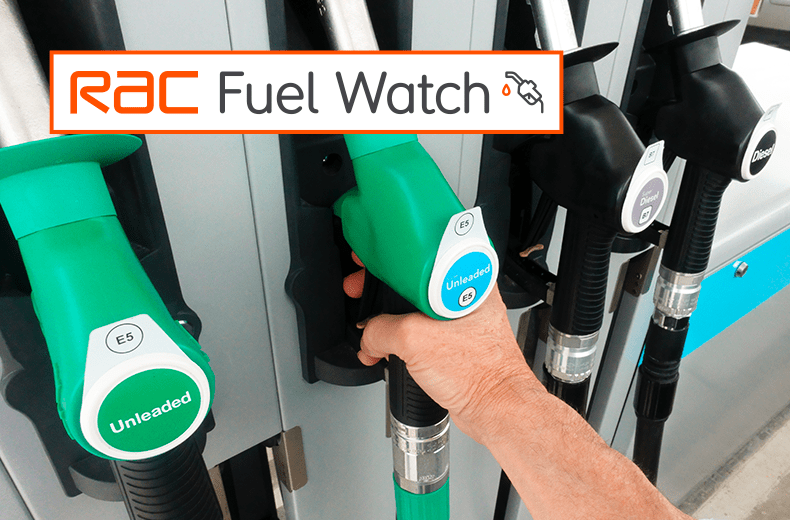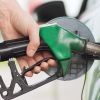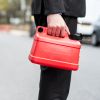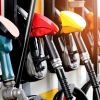We monitor wholesale prices – those retailers pay – and pump prices daily, covering the UK's big four supermarkets (Asda, Costco, Tesco, Sainsbury's and Morrisons), plus many other brands. And, when wholesale prices dip, we call on retailers to pass on the savings they are benefiting from to drivers at the pumps.
What are the latest UK petrol prices and diesel prices? ⛽️
The prices below are the latest available average unleaded petrol, diesel and liquid petroleum gas (LPG) averages across supermarket, motorway and other independent forecourts in the UK, and are updated daily where data is available. Data is provided without warranty.
Latest petrol and diesel prices
Latest supermarket petrol prices - Asda, Morrisons, Sainsburys and Tesco
Latest petrol prices from other brands
The table below shows fuel prices by the brand that is displayed at the forecourt. However, the retailer which is in charge of prices may not be the same. For instance, seeing the BP brand on a forecourt isn't neceesarily an indication that the forecourt is owned and operated by BP, as the company's fuel is sold by a number of different retailers - not just BP itself.
Latest supermarket diesel prices
Latest diesel prices from other brands
The table below shows fuel prices by the brand that is displayed at the forecourt. However, the retailer which is in charge of prices may not be the same. For instance, seeing the BP brand on a forecourt isn't neceesarily an indication that the forecourt is owned and operated by BP, as the company's fuel is sold by a number of different retailers - not just BP itself.
For the RAC's latest analysis of both petrol and diesel prices, please visit the RAC Fuel Watch section of our media centre. A guide to understanding fuel prices is also available.

RAC sale – up to 33% off*
• Roadside cover from £5.29 a month†
• We get to most breakdowns in 60 mins or less
• Our patrols fix 4/5 breakdowns on the spot

How do I find the cheapest petrol and diesel near me?
Petrol prices can vary a lot, even over a short distance. Save money every time you fill up with the Fuel Finder feature in the free myRAC app - just download it from the App Store or Google Play. All registered users - whether RAC members or not - can quickly search within two, five or 10 miles to make sure they always get the cheapest fuel around.
How have petrol and diesel prices changed over time in the UK?
The graphs below track the changes in average petrol and diesel prices over time.
Unleaded petrol - average UK prices over time
Diesel - average UK prices over time
What makes up the cost of a litre of petrol or diesel in the UK?
The price you pay for petrol and diesel at the pumps is governed by wholesale fuel prices - the price retailers pay - which are themselves affected by:
- the global price of crude oil, which in turn is governed by:
- supply and demand for crude oil
- oil refinery production and capacity
- the pound to dollar exchange rate, as refined fuel is sold in US dollars per metric tonne
- distribution costs
- the margin (profit) fuel retailers decide to take
- fuel duty charged by the Government
- VAT charged at the end of every forecourt fuel transaction
While some of these stay largely static - such as VAT - others such as the oil price and dollar to sterling exchange rate can be very volatile. This explains why prices rise and fall. A combination of high oil prices and a weak pound leads to the highest pump prices.
The tables below show how the average price of a litre of petrol and diesel is made up, and shows what proportion of the pump price goes directly to the Government as tax.
What is fuel duty?
Fuel duty is charged by the Government on every litre of fuel that is sold, whether petrol or diesel. It's included as part of the pump price. In recent years, governments have frozen fuel duty at the rate of 57.95p per litre. The duty rate was cut to 52.95p in 2022 in the aftermath of the Russian invasion of Ukraine which caused fuel prices to increase rapidly. In the Budget on 30 October 2024, it was confirmed the 52.95p rate would remain in place from Spring 2025.
The chart below shows the current rate, as well as those which UK drivers have been charged in previous years.
What causes fuel duty to rise?
The Government uses its annual Budget to set the rate of fuel duty. It is a general form of taxation, with revenue raised not specifically going to roads or anything else related to motoring. According to the Office for Budget Responsibility, fuel duties "represent a significant source of revenue for government".
What are the cheapest petrol and diesel prices near me?
Fuel prices can vary a lot, even over a short distance. In March 2024, an RAC investigation for ITV's Tonight show found a 27p per litre difference between the price charged for petrol at two filling stations just a short drive apart.
The myRAC app allows drivers to locate the cheapest fuel that's close to them.
How do I cut what I spend on petrol and diesel?
- Check the latest RAC Fuel Watch average price. This is displayed at the top of this page and on the myRAC app. Always aim to pay no more than this average price when you fill up
- Drive efficiently. This is the best way to save money on fuel, and you can read our guide to saving fuel on how to do it
- Get to know the cheapest filling stations where you live. And look beyond the supermarkets - some independent retailers can be cost-competitive too. Even taking a small detour to visit a cheaper forecourt can save you a few pence per litre, and over 12 months’ motoring that could lead to a sizeable saving. The Fuel Finder feature of the free myRAC mobile app can help you find the cheapest forecourts
- Consider cashback. Some credit card companies offer cashback for spending money at filling stations. While it might not actually save you money at the pumps, it will offset higher petrol or diesel prices by putting something back in your account. Just remember to pay off your balance in full before the deadline every month or your savings will be cancelled out
Is there a link between fuel prices and inflation?
As the RAC chart below shows, there is a clear link between fuel prices and inflation (the Consumer Prices Index - CPI - as reported by the Office for National Statistics, or ONS). In its own bulletins, the ONS has also regularly called out falling fuel prices as the main reason for a reduction in the headline inflation rate.
So, higher oil - and in turn petrol and diesel - prices can contribute to higher levels of inflation. The inverse is also true. Given how important inflation is, especially when the cost of living is so high, these are important measures to follow.
Frequently asked questions
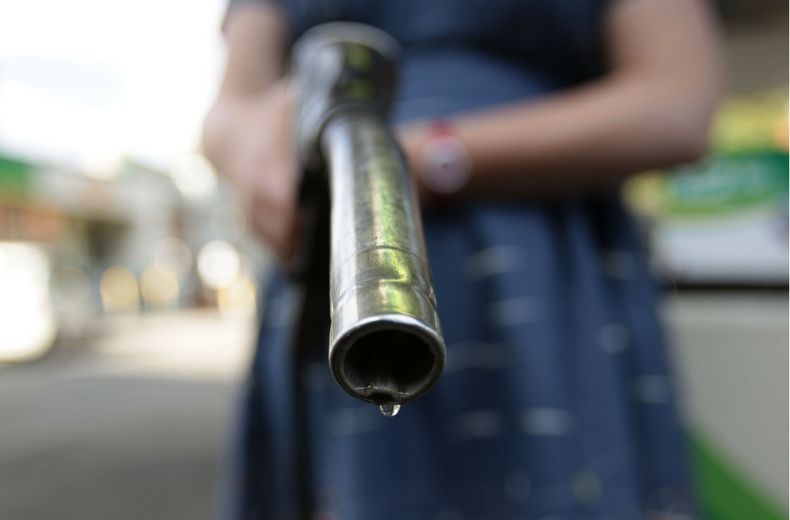
What are the highest ever recorded petrol prices and diesel prices?
Average petrol and diesel prices hit records during the summer of 2022. The highest ever average prices were 191.5p per litre of petrol (on 3 July 2022) and 199.09p per litre of diesel (on 25 June 2022). Some forecourts charged substantially higher than these averages, however. At these prices, tax to the UK Government represented around 43-44% of the total price that drivers were paying.
What are the lowest recorded petrol and diesel prices? And how low can fuel prices go?
Petrol and diesel prices were last at historically low prices in February 2016, when the average price of a litre of unleaded fell to just 101.27p and diesel to 100.19p. This was caused by an extremely low oil price. Some UK fuel retailers charged even less than a pound a litre around this time.
But there is a limit to how low UK fuel prices can go, as tax – fuel duty, plus VAT charged on the total price – can make up the lion’s share of the price of a litre. Even if the fuel was given away and the retailers didn’t take any margin, the price of a litre would still include duty and VAT.
This high level of tax affects the price of a litre of fuel significantly. When the price of oil is falling it can also create a perception that pump prices are not reducing as much as they should because the lower the pump prices falls, the greater the percentage of tax. The Government also makes more in VAT when fuel prices are higher.
How does the oil price change?
Generally speaking, higher oil prices lead to higher petrol and diesel prices at UK forecourts - and in theory at least, lower oil prices should lead to cheaper pump prices. But there are other variables that affect what we pay when we fill up, including the strength of Sterling compared to the US dollar (since oil is traded in dollars) and retailers' willingness to pass on wholesale savings they make to drivers.
How is fuel taxed?
The total retail price paid at the pump includes a significant amount of tax – as of September 2024, fuel duty is currently set at 52.95p per litre and VAT at 20%.
But the total proportion of tax we pay to the Treasury varies depending on the pump price. For instance, with fuel at 120p a litre at the pumps, 65% of the cost is tax. But at £1 a litre it rises to 75%, meaning 75p in every litre sold goes to for the Treasury.
Fuel duty raises more than £26bn a year, which together with VAT charged on fuel, vehicle tax and ‘showroom’ tax totals, means motorists contribute more than £40bn a year to the Government’s coffers.
How often do UK pump prices change?
Pump prices change when there are significant and sustained increases or reductions in the wholesale price of petrol or diesel. Retailers can reflect these savings as often or as infrequently as they like.
In reality though the retail fuel market tends to be led by the supermarkets, as despite only having around 16% of UK forecourts they are responsible for some 44% of total fuel sales, so we often see widespread cuts being passed on at the pumps at the same time.
The other factor which affects when forecourt prices are changed is how frequently retailers buy their fuel. Retailers who use greater volumes tend to buy more frequently and can therefore alter their prices more quickly - if they choose to.
What is the ‘rocket and feather’ effect, and is it true?
This is a term often applied to fuel prices to describe how they always appear to rise faster than they ever come down, i.e. they go up like a rocket but fall like a feather.
Before 2020, the RAC believed retailers had a reasonable record of passing on reductions in the wholesale price of fuel to motorists at the pump, but there were occasions where we thought this could be carried out more quickly.
For instance, retailers often seem to take more encouraging to reduce their prices when oil prices are falling than they do when oil goes the other way.
Of course, the longer they hold off cutting pump prices when oil’s coming down, the better it is for their margins, and the reverse is also true: when the cost of a barrel of oil rises, the more they stand to lose if they don’t raise the forecourt price quickly.
RAC analysis of prices in January 2023 showed 'rocket and feather' pricing in action.
- What is the best fuel for my car? The definitive guide to different fuel types
- 11 ways to reduce your driving emissions
- Does fuel go off? Old fuel and fuel storage questions answered
Why do prices vary by region?
UK petrol and diesel prices can vary dramatically from region to region and even in towns that are only a few miles apart.
Sometimes fuel can even be cheaper in a more rural location than in an urban one.
Local retail dynamics play a large part. Local prices are very often driven by the presence of supermarkets keen to compete on price or an independent forecourt retailer that is determined to offer the cheapest fuel. If local supermarkets selling fuel don’t compete strongly on price this can lead to motorists paying more.
Why are rural prices often higher?
While delivery costs tend not to play too large a part in the overall pump price, excessive distances from fuel terminals can have a significant effect on prices in rural locations.
It is for this reason the Government has previously taken action to help some of the country’s most rural communities where the price of fuel is deemed to be negatively affecting residents.
In 2012 it introduced a 5p rural fuel duty discount in the Inner and Outer Hebrides, the Northern Isles, and the Isles of Scilly. In March 2015 this was extended to 10 rural mainland communities.
How do fuel prices in the UK compare to the rest of Europe?
Prices in the UK can vary considerably when compared to other nations. Diesel in many other countries is generally cheaper than in the UK however, as the fuel is often taxed less heavily. In the UK, the tax rate on petrol and diesel is identical. For more data and analysis, see our separate full guide to European petrol and diesel prices.
How many forecourts are there in the UK?
According to the Fuels Industry UK, there are around 8,400 filling stations. This number has reduced drastically from 1970 when there were more than 37,000.
Supermarkets dominate fuel sales, despite only operating around a fifth of the forecourts. Conversely, independents operate around two-thirds of the country’s filling stations but are only responsible for just over a third of all fuel sold. The remainder is accounted for by sites owned by the supplying oil company, whose name appears on the brand sign (Shell, BP, Esso, Texaco, TotalEnergies etc). As of 2022, it was reported that Shell had 1,123 UK sites and operates 526 of these, meaning the other 597 were run independently.
How much petrol and diesel is sold in the UK?
The UKPIA has previously reported that each day, 46m litres of petrol and 74m litres of diesel are sold in the UK.
According to HM Revenue and Customs data for 2022, 45.3bn litres of fuel were used by drivers – 27.7bn litres of diesel and 14.8bn litres of petrol.
- What to do after putting the wrong fuel in your car
- Petrol or diesel? Facts and quiz to help you choose
- RAC Pothole Index - statistics and data for UK roads
Would I be better off in an electric car?
Quite possibly. Although electricity prices can - and do - vary, if you're in a pure battery electric vehicle and able to charge at home then changes in the oil price won't affect the cost of running your car. Check out our full advice and guides on choosing, charging and running an electric car. The RAC also established the UK's first price monitor for rapid-charging an electric car – RAC Charge Watch.
What does the RAC think of petrol and diesel prices?
For the latest fuel-related news and comment from the RAC, see our fuel news pages.
If you're a journalist and want to find out more, or if you'd like to use any of the charts or data on this page, please email our press office.
More from RAC Fuel Watch
Looking to save money on filling up? Read our ultimate guide on how to save fuel.
For complete peace of mind, take a look at our Breakdown Cover and European Breakdown Cover products today.

RAC sale – up to 33% off*
• Roadside cover from £5.29 a month†
• We get to most breakdowns in 60 mins or less
• Our patrols fix 4/5 breakdowns on the spot


